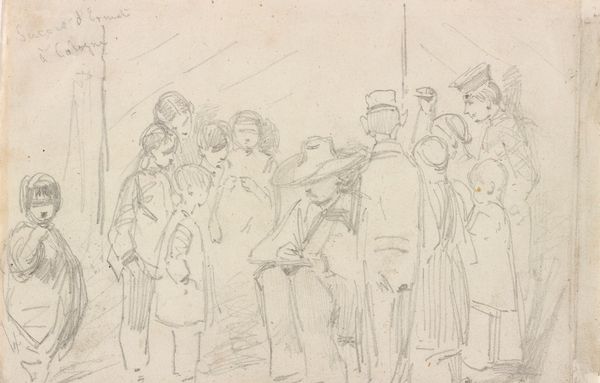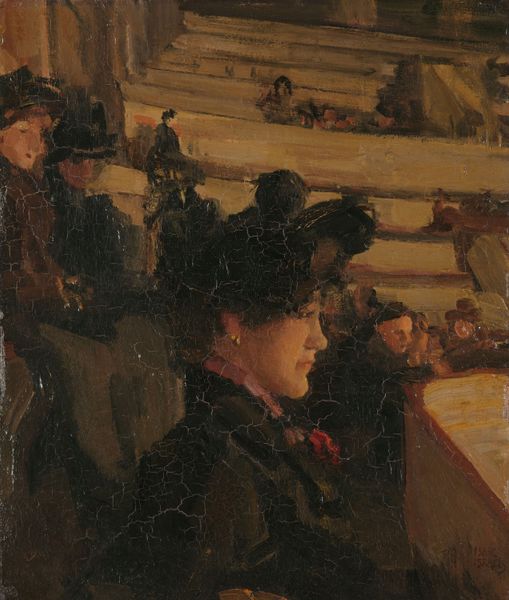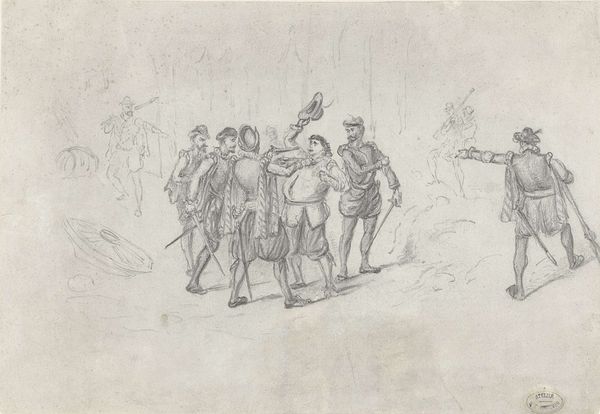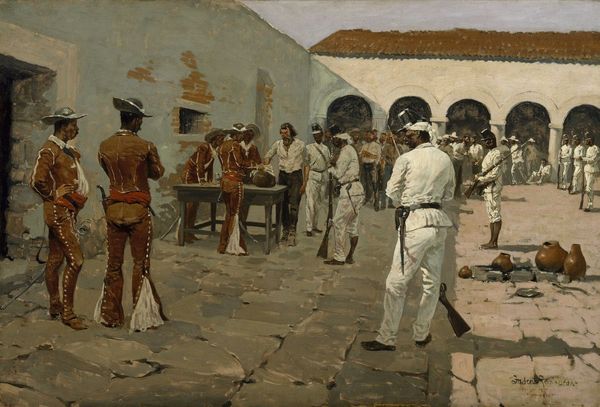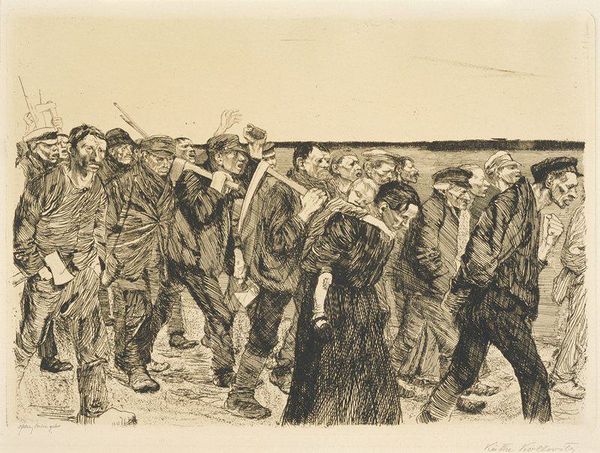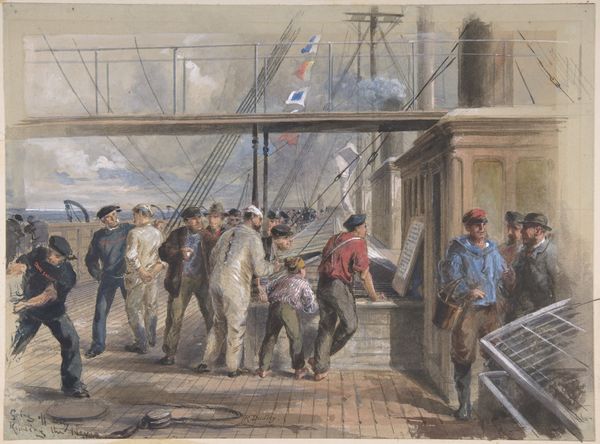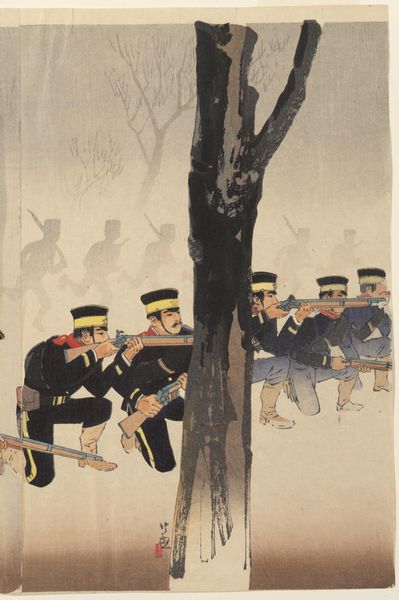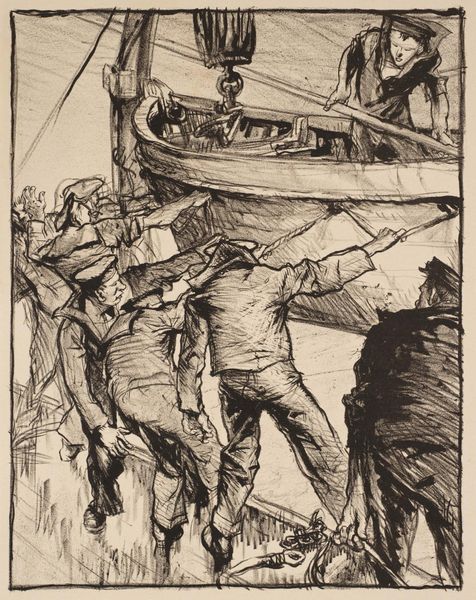
painting, oil-paint, canvas, impasto
#
painting
#
oil-paint
#
figuration
#
oil painting
#
canvas
#
impasto
#
underpainting
#
painting painterly
#
history-painting
#
academic-art
#
realism
Dimensions: 48 cm (height) x 58 cm (width) (Netto)
Curator: Édouard Manet's “The Execution of Emperor Maximilian,” painted in 1867, presents a stark historical scene rendered in oil on canvas. Editor: The initial feeling is brutally efficient, cold. There's a raw, almost journalistic detachment to the depiction of state-sponsored violence. I can practically smell the gunpowder. Curator: Manet captures a moment of immense symbolic weight, representing the fall of Maximilian and the end of French intervention in Mexico. Notice the firing squad—their anonymity is as crucial as Maximilian's exposed figure. They are instruments of political will. Editor: The way the executioners are rendered…uniform, almost machine-like. It speaks volumes about the dehumanizing effects of warfare and political ideologies. And the quick brushstrokes make you feel the urgency in how he represents it. Curator: Absolutely. There's a reference, conscious or not, to earlier depictions of executions, even Christ’s crucifixion— the fallen emperor’s pose even invokes those earlier painful historical moments of loss, but emptied here of any real spirituality. Editor: Interesting, because for me the underpainting showing through, especially in the background, suggests instability—it's almost as if the landscape itself is rejecting the barbarity displayed. It suggests a critical viewpoint through purely painterly means. What do we make of Manet's deliberate use of impasto, giving substance to brutality? Curator: Indeed, there is that painterly instability—the emotional weight is conveyed through artistic approach and decisions about technique. Maximilian becomes a tragic figure, but a somewhat removed one through Manet’s Realist aesthetic. His fate is etched onto the material of the painting itself, in its textures and form, and into history. Editor: Looking closely at the medium then, it's as though Manet wanted us to focus on the blunt materiality of it all: the uniforms, the guns, the act of painting itself as a commentary. The painting feels so modern in its grim frankness, even now. Curator: A painting speaking across time, of imperial failures and humanity’s continuing penchant for violent conflict, encoded in layers of paint and political meaning. Editor: It truly leaves a disquieting feeling – how brute action is aestheticized or memorialized with objects such as this artwork.
Comments
No comments
Be the first to comment and join the conversation on the ultimate creative platform.

